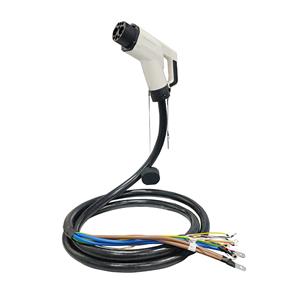Industry News
-
2010-2023
The Significance of Miniature Voltage Transformers in Power System Monitoring, Protection, and Control
Power system monitoring, protection, and control are critical aspects of ensuring reliable and efficient electricity supply. In this blog post, we will explore the role of miniature voltage transformers in these processes and understand their significance in achieving accurate and isolated voltage measurements for various applications, especially in the field of medical devices.
-
1910-2023
Discuss their use in providing accurate and isolated voltage measurements in critical medical applications.
Miniature voltage transformers play a crucial role in providing accurate and isolated voltage measurements in critical medical applications. These transformers are designed to ensure the safety and reliability of voltage measurements, which are vital for monitoring and diagnosing patients in medical settings. In this article, we will explore the importance of miniature voltage transformers and their use in medical applications.
-
1409-2023
Example applications of Nixie tubes
Nixie tubes are electronic display devices that were commonly used in the mid-20th century to indicate numerical or alphanumeric information. They consist of a series of cathodes shaped like numerals or characters and a mesh anode that forms the display. When a specific cathode is activated, a glow discharge occurs, illuminating the corresponding numeral or character.
-
0109-2023
Exploring the Fascinating World of Nixie Tubes
Nixie tubes, the iconic vintage electronic display devices, have captured the hearts of electronics enthusiasts for decades. In this blog post, we will dive deep into the realm of Nixie tubes, exploring their history, working principles, applications, and even how to build and drive Nixie tube circuits. Join us on this journey to discover the magical glow of Nixie tubes.
-
3008-2023
Understanding Inductance and Inductors
In the realm of electrical engineering, understanding the concepts of inductance and inductors is crucial. This article aims to provide a comprehensive explanation of these concepts, utilizing the knowledge base of a university professor.
-
2908-2023
Manufacturing Process of LCD Screens
LCD screens, or Liquid Crystal Displays, have become a ubiquitous technology used in various electronic devices such as televisions, computer monitors, smartphones, and digital signage. This article aims to provide an overview of the manufacturing process involved in producing LCD screens.
-
1508-2023
TFT LCD Applications in Industrial Control Systems
TFT LCDs have become the standard display solution in various industries due to their superior performance and versatility. In this technical blog post, we will delve into the applications of TFT LCDs in industrial control systems and understand their significance in enhancing automation and efficiency.
-
0408-2023
latching relay in future
integrating advanced sensor technologies into closing relays can enhance their functionality and responsiveness. By incorporating sensors such as temperature, pressure, and vibration sensors, relays can monitor the operating conditions in real-time and provide timely feedback to prevent potential faults or malfunctions. This not only increases the reliability of the relays but also enables proactive maintenance and system optimization.
-
1308-2023
Dot matrix lcd
Dot Matrix LCD (Liquid Crystal Display) is a type of display technology that utilizes an array of small pixels arranged in a matrix pattern to form images or text. Each pixel consists of multiple dots or segments that can be individually controlled to display specific information. Dot matrix LCDs are commonly used in applications that require alphanumeric characters, simple graphics, or segmented displays, such as digital watches, calculators, and industrial control panels.
-
0908-2023
The Future of Voltage Transformers in the New Energy Vehicle Industry
As the world moves towards a more sustainable future, the new energy vehicle (NEV) industry has gained significant momentum. Electric vehicles (EVs) are at the forefront of this revolution, with their increasing popularity and adoption. One crucial component that plays a vital role in the development of EVs is the voltage transformer. In this blog post, we will explore the application prospects of voltage transformers in the NEV industry from the perspective of a university professor.




